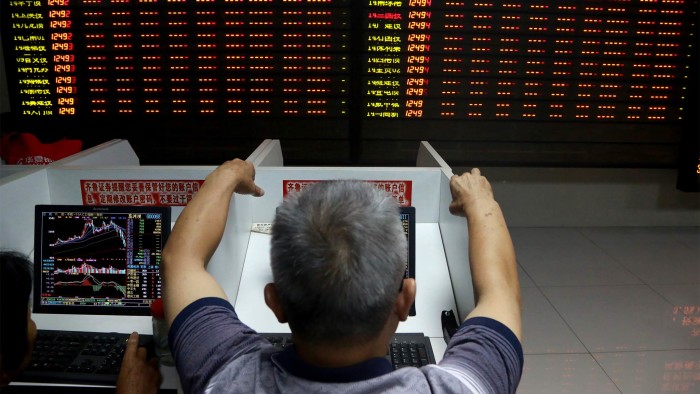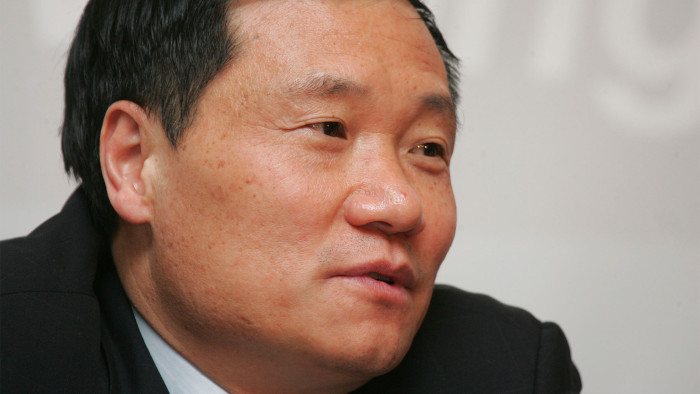PBoC tests quantitative easing with Chinese characteristics

Roula Khalaf, Editor of the FT, selects her favourite stories in this weekly newsletter.
China’s central bank has embarked on unprecedented measures to stabilise the country’s cratering stock market in recent days, in what some are calling quantitative easing with Chinese characteristics.
Yet analysts say China’s action more closely resembles emergency actions used by western central banks to stabilise credit markets at the height of the 2008 financial crisis, and differs significantly from the extended bond-buying programmes subsequently rolled out to stimulate the real economy.
At the height of the crisis, the US Federal Reserve created new lending facilities allowing banks to use mortgage-backed securities and other “toxic assets” as collateral at a time when normal demand for these assets had collapsed.
The move by the People’s Bank of China to lend to China Securities Finance Corp to fund stock purchases similarly casts the central bank as buyer of last resort for assets shunned by investors in the open market. Both forms of intervention expand the money supply.
“This is not exactly the US Fed style of QE, but serves the same purpose of stopping market panic and a selling chain reaction through unconventional policies and market interventions,” says Dong Tao, head of Asia ex-Japan economics at Credit Suisse.
“If market conditions do not stabilise, we expect a statement of ‘whatever it takes’ from the Chinese government given that social stability is at stake and financial systemic risks are evident.”
In the aftermath of the 2008 crisis, as the recovery of real economies in Europe and the US remained sluggish, central banks resorted to a different form of QE: purchases of long-term government bonds. In the eurozone, bond purchases are still ongoing. But this kind of QE is significantly different from what the PBoC has undertaken.
Bond purchases by western central banks aimed to stimulate the real economy. By pushing down long-term interest rates, authorities hoped to persuade households and businesses to buy homes and expand factories. By contrast, the PBoC action is aimed squarely at the stock market.
“If the PBoC does buy stocks from investors, that definitely injects money to the real economy and is essentially QE for sure,” said Larry Hu, China economist at Macquarie Securities.
China stock markets recover some poise

The stock market sell-off has abated after as Beijing’s barrage of measures to boost liquidity and calm nerves appeared to have some effect.
Continue reading
“In that case, what’s in PBoC’s mind is to save the market, rather than stimulate the economy as [then-Fed chair Ben] Bernanke did with QE.”
Another difference is the context. Western central banks started buying bonds only when their standard monetary policy tool — short-term interest rates — were already at or near zero, leaving no room for further cuts.
The PBoC has cut benchmark interest rates four times since November but the one-year rate, at 4.85 per cent, has room to fall further. In the context of tumbling share prices, however, lower borrowing costs would not persuade investors to buy stocks.
Unlike bond-buying by western central banks, the PBoC is also not taking stocks directly on to its balance sheet, but is instead using CSF as a conduit to inject funds into the market. In practice, the effect is largely the same, economists say, as loans to CSF also create new money while boosting demand for stocks.
The use of CSF does provide some protection to the PBoC’s balance sheet, however. While the safety of the central bank’s loans to CSF is closely linked to stock prices, CSF has equity capital that could absorb some losses. That would allow CSF to repay loans to the PBoC even if the shares it buys fall in value.
Xiao Gang: chairman of China’s embattled markets regulator

Xiao Gang, head of China’s stock markets regulator, is a central bank veteran who has played a crucial role in the reform of the banking sector.
Continue reading
The bigger quandary for a central bank that finds itself holding stock, whether directly or indirectly, would be how to exit. Just as critics of western governments’ bond-buying worry that developed economies are now “addicted” to QE, so Chinese authorities would confront the risk that once CSF tried to unload the shares it had accumulated, market turmoil would quickly return.
China’s central bank has not disclosed the scale of its loans to CSF, saying only that its loans have been “ample”. That makes direct comparisons with western QE difficult. Still, with the mechanism for pumping newly created money into the stock market via CSF now in place, the PBoC is clearly ready to shock and awe if necessary.
“The nuclear measure would be for the PBoC to ramp up its liquidity support either via the CSF or directly, making it a de facto QE programme,” Wei Yao, China economist at Société Générale, wrote. “But we are not sure how far the reform-minded central bank will be willing to go in that direction.”
“If the stock market cannot stabilise soon, the government should be careful not to commit too many resources to this goal.”
Twitter: @gabewildau
Comments